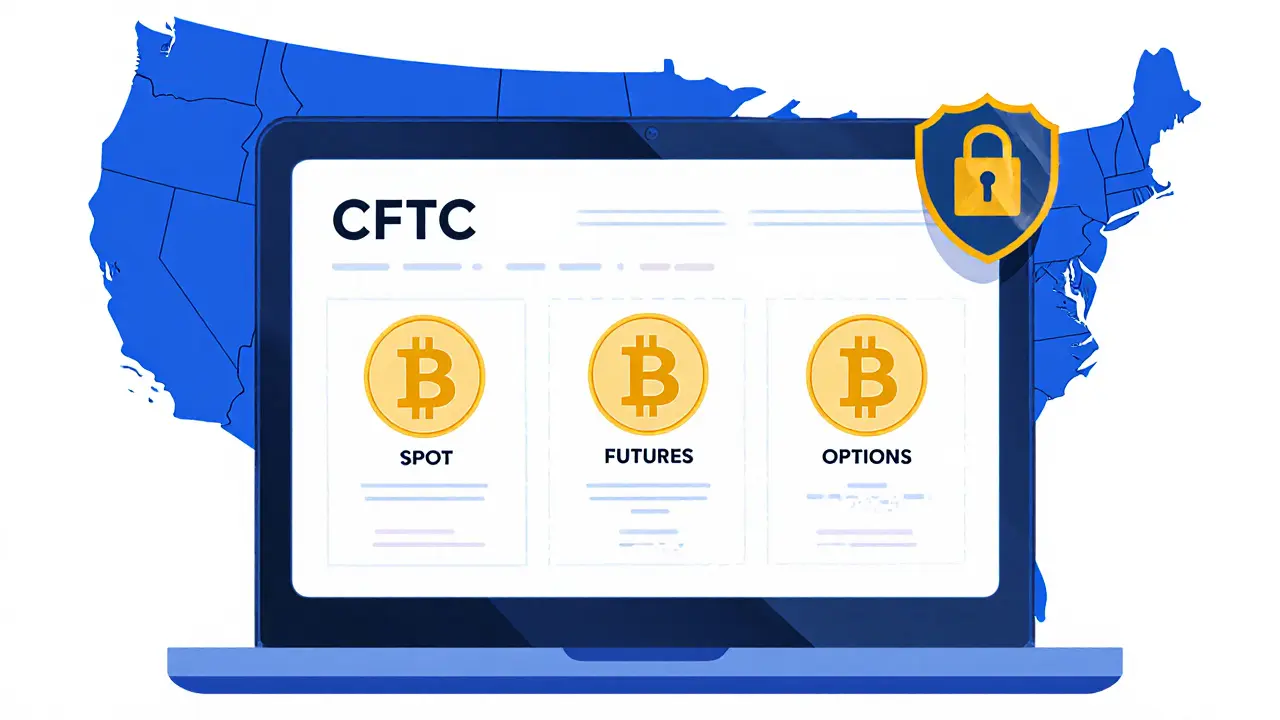LedgerX: A Regulated Gateway to Crypto Derivatives
When working with LedgerX, a U.S.-regulated exchange that offers crypto futures and options for professional and institutional traders. Also known as the regulated crypto derivatives platform, it bridges traditional finance compliance with the fast‑moving crypto market. LedgerX isn’t just another exchange – it’s a bridge that lets big‑player investors dip into Bitcoin and Ether price swings without breaking any rules.
At its core, crypto derivatives, contracts that derive value from underlying digital assets like Bitcoin, Ethereum, or other tokens let you bet on price moves without actually holding the coin. Think of it as a futures contract on a stock, but for crypto. LedgerX offers both futures and options, so you can lock in a price today (futures) or pay a premium for the right to buy or sell later (options). This flexibility is why institutional investors gravitate toward regulated venues – they get the upside of crypto’s volatility with the legal safeguards they need.
Why Regulation Matters in the Crypto World
When you hear the term regulated exchange, a platform that follows strict financial‑service rules, reports to regulators, and audits its operations, the first thing that comes to mind is safety. LedgerX is registered with the CFTC, subject to AML/KYC checks, and runs its contracts on a secure, audited technology stack. This means that, unlike many unregulated DEXes, your positions are protected by legal recourse if something goes wrong. That legal backbone also attracts institutional investors, banks, hedge funds, and family offices that need compliance, custody, and reporting tools. They can trade Bitcoin futures on LedgerX the same way they trade oil futures – with confidence that the market is overseen.
But regulation is not a wall; it’s a gateway. LedgerX’s compliance framework makes it easier for traditional finance firms to experiment with crypto strategies, like hedging a Bitcoin exposure or speculating on a price rally. This blend of regulated structure and crypto innovation also feeds into the broader DeFi conversation. While DeFi platforms like Aave or Uniswap operate without a central authority, the demand for “regulated DeFi” is rising – a space where smart contracts meet compliance. LedgerX’s presence shows that the industry can have both: the speed and creativity of decentralized tech, plus the trust of regulated markets.
Security isn’t just about regulation; it’s also about identity. Emerging digital identity, self‑sovereign solutions that let users prove who they are without handing over personal data to a single party are becoming a cornerstone for exchanges. LedgerX is already exploring SSI (self‑sovereign identity) to streamline KYC while keeping user data private. The idea is simple: you own your identity credentials, and the exchange verifies them on the spot. This reduces onboarding friction for institutional clients and makes the whole process more secure against data breaches.
Another hot topic in the crypto sphere is sustainability. “Green crypto” isn’t just a buzzword – it’s a real concern for traders and regulators alike. LedgerX has started to offset the carbon footprint of its trading infrastructure by purchasing renewable‑energy credits and supporting proof‑of‑stake networks. By aligning with carbon‑neutral initiatives, the platform not only meets growing ESG (environmental, social, governance) expectations but also appeals to firms that need to report on their environmental impact.
Now, you might wonder how LedgerX fits with the flood of airdrops, token launches, and flash‑loan tricks you see in the news. While most airdrops target retail users on open DEXes, LedgerX’s regulated nature means it doesn’t participate in those wild “free‑token” campaigns. Instead, the platform focuses on delivering reliable, high‑volume futures contracts. That said, understanding the broader market – from flash‑loan providers to DeFi yield farms – helps institutional traders gauge risk and spot arbitrage opportunities. For example, a trader could use a flash‑loan on a DEX to capitalize on a price discrepancy, then hedge the exposure with a LedgerX futures contract.
Finally, let’s talk about the real‑world use cases that make LedgerX valuable today. A hedge fund in Singapore might hedge its Bitcoin exposure by selling futures on LedgerX, locking in a price while still holding the underlying asset. A corporate treasury looking to diversify could buy options to protect against a sudden drop in crypto prices. Even a family office could use the platform to get exposure to crypto volatility without the custody headaches of holding the coins directly. All of these scenarios rely on the same three pillars: regulated infrastructure, robust contracts, and seamless integration with existing finance workflows.
In short, LedgerX sits at the crossroad of traditional finance compliance, cutting‑edge crypto products, and the evolving demands of institutional players. Whether you’re curious about how futures work, worried about regulatory risk, or looking to blend DeFi strategies with a secure trading venue, the platform offers a solid foundation. Below you’ll find a curated collection of articles that dive deeper into topics like crypto adoption in India, flash‑loan mechanics, digital identity, green blockchain solutions, and more – all of which intersect with the world LedgerX operates in. Let’s explore how these pieces fit together and what they mean for your crypto journey.

